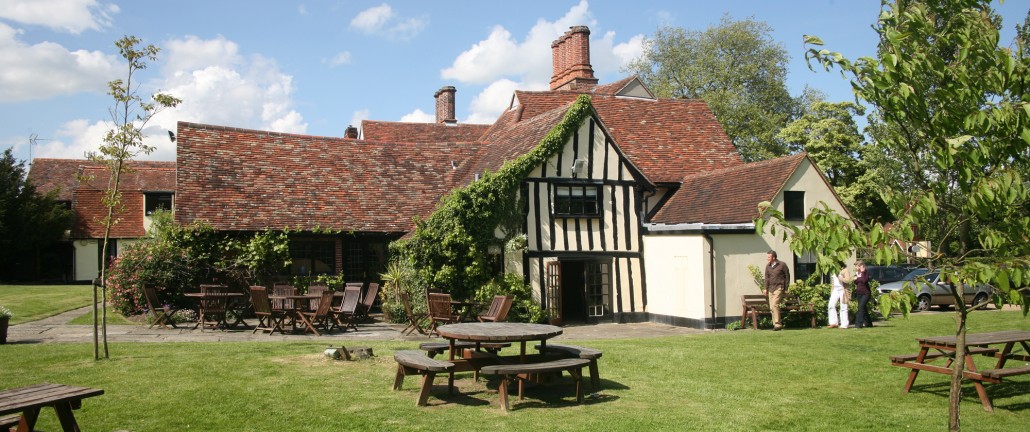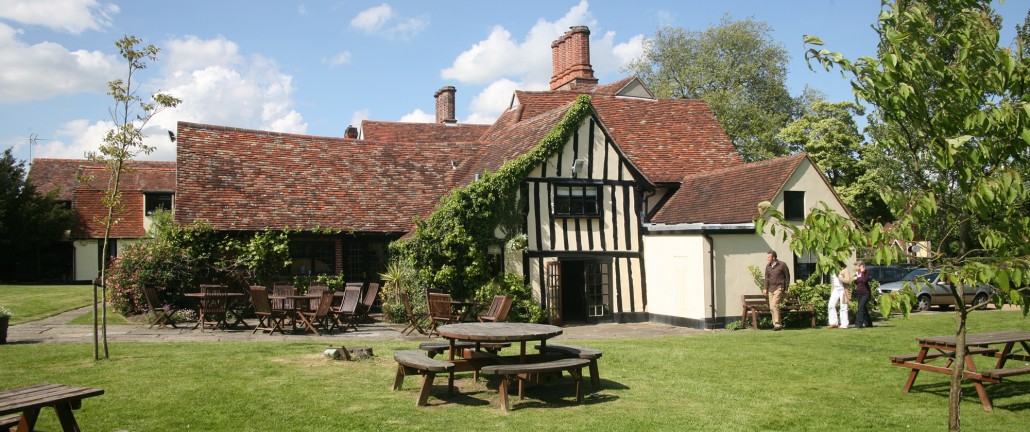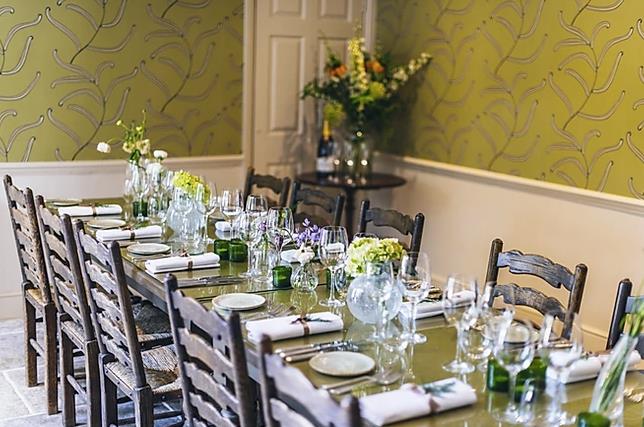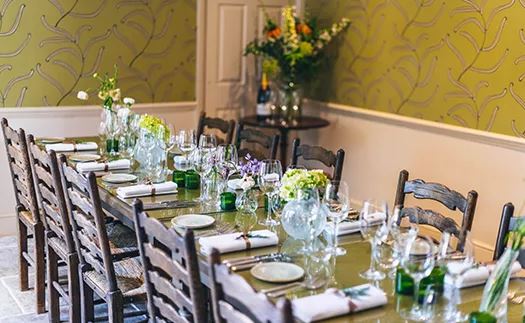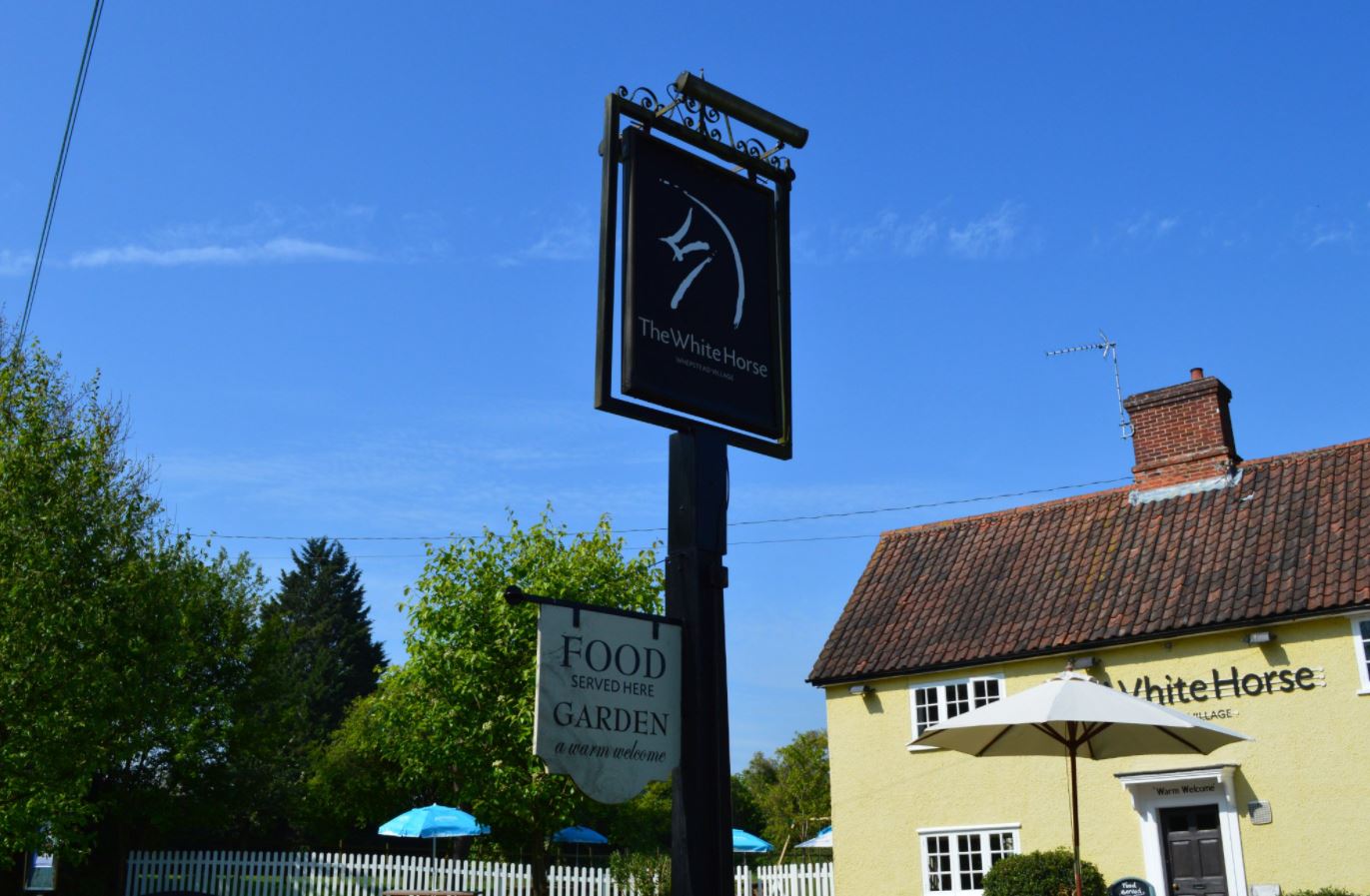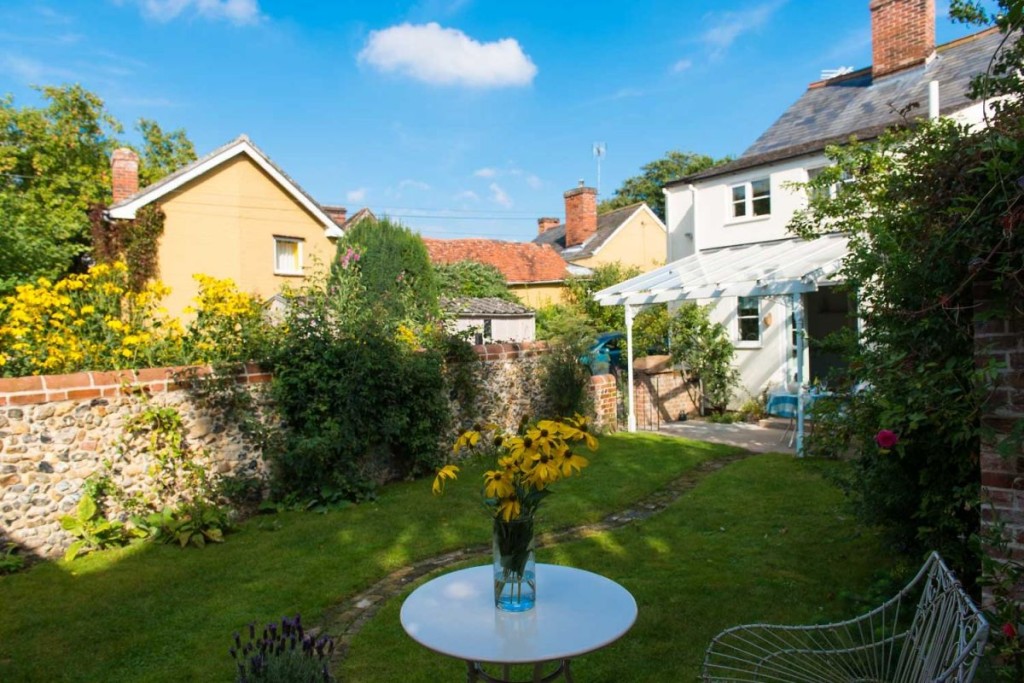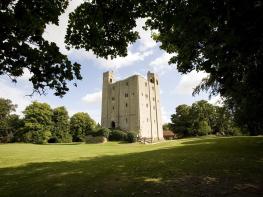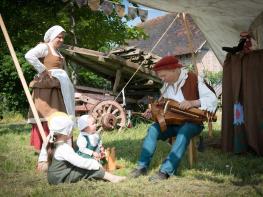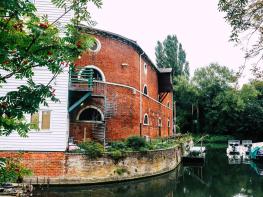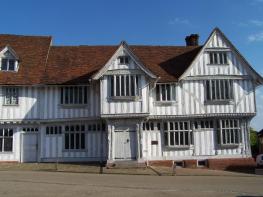Suffolk Retreats offers accommodation, in a peaceful and tranquil location for groups of up to…
Clare Castle and Priory

A wool town with Saxon settlement, a priory and a railway station inside an old castle.
4 miles (6.4kms)
About the walk
Clare is a village so steeped in history that it’s a wonder anyone from the 21st century is allowed in it. A castle, a priory and a huge church take centre stage along with two ancient pubs and a host of half-timbered houses. However, all these are modern additions in comparison with Erbury, an encampment now known as Clare Camp. It’s hardly surprising that a contemporary innovation such as a railway line should receive short shrift here, though doubtless Dr Beeching took the credit for cutting it. However, the remains of the former station have somehow survived inside the castle’s inner bailey (though whose brilliant idea was it to put it there in the first place?).
Clare Camp
Ramparts in a D-shape covering about 12 acres of ground on what is now part of Clare’s Lower Common form what is left of an encampment of Erbury (also once known as Houndwall). The main entrance is believed to have been in the east of the camp, with less important ones to the north and south which can still be easily picked out. Some exploratory work on the site was carried out in 1994, but no full excavation has been undertaken and, although some historians have proposed that it is of Iron Age origin, putting a firm date to the camp has so far proved impossible. Furthermore, no one has yet been able to determine exactly what the purpose of the camp was. However, the enclosure is known to have been in use in the Middle Ages, when barns and houses existed here. The rest, to now at least, is mystery.
Clare Castle
As is suggested in the name, Clare Castle Country Park contains what remains of Clare Castle. This consists of a well preserved 70ft (21m) motte on which sits the stump of a stone keep built in the 13th century. The Clare Reliquary, containing a fragment of the true cross as given by Edward III to his granddaughter Philippa, was found here in 1866 after having been lost for nearly 500 years.
Clare Priory
The priory is not only the oldest single Augustinian house in use by friars of that order, but it is also the most complete example of a mediaeval friary we have in England today. The Augustinians came to England from France by the invitation of Richard, 8th Lord of Clare, who established the friary beneath the castle walls in 1248. It was the first English of what were to be 34 Augustinian friaries in England. Despite the fact that some of the friars at Clare became ardent Lutherans, the priory was dissolved by Henry VIII in 1538. The property remained in private hands for most of the next 400 years, though it also served as a school and a nursing home and was requisitioned by the army for the period of the Second World War. However, its last owner, Lady May, bequeathed it to the Augustinians who moved back into their old quarters in 1953.
Church of St Peter and St Paul
Here is a church that clearly wants to be a cathedral when it grows up and is part of the way there already. Look inside for The Gotch, ‘A beer jug presented to the bell ringers in 1729 by the then vicar, the Rev Matthew Bell, and holds 32 pints.’
Walk directions
Leave the car park by the entrance, walking up The Broadway. At the end, cross the road and turn right along Well Lane which swiftly becomes Market Hill. Pass the small Co-op supermarket and continue up the short lane that leads to the parish church of St Peter and St Paul. Turn left at the gates leading to the church, passing the Clare Ancient House Museum (open Thursday to Sunday in summer). Turn right, passing the church tower, and then left through the black iron gates of Clare Parish Cemetery. At the chapel turn right onto a field-edge path and at the point where the path disappears behind a high conifer hedge turn left to continue around the field.The path joins a wider track as it continues its climb up the right-hand side of the next field. Ignore the turning to your right and continue along the path as it swings left then right on its descent to Bench Barn Farm.
Walk between farm buildings to a pond. Turn right here up a short slope to enter a field. Go straight ahead down the middle of the field aiming for the right-hand edge of a hedge about 300yds (274m) ahead of you on a path that may be indistinct at first. When you reach the hedge continue straight on. Burrow your way straight on through the next hedge you come to (the gap is somewhat overgrown) and walk on for another 50yds (46m) to a junction of paths where you turn right.
Continue ahead on this field-edge path as it slips into the next field via a gap in the hedge on its way back towards Clare. At the end of this field cross a little footbridge into a belt of trees crossing another footbridge on the way out to bear half-left across a field. Descend a few steps to continue along a path now shrouded by trees. It emerges onto a stony track with views of allotments with Clare behind. After a few yards, pass through a gap in the hedge to your right and join a footpath heading towards the left edge of the village. Keep straight on, passing the allotments to your right, and go over a stile. This is Erbury Camp, which may or may not have been an iron age fort built by the Trinovantes. Bear fractionally right to arrive at an information board among the remains of the ramparts. There is no path but head roughly for the far right corner of the field by aiming for a small horse chestnut tree and carry on in a straight line past it to go through two gates either side of a short footbridge. If you come to a metal kissing gate by mistake, turn around and with your back to it bear half left.
The path is now flanked by wooden fences. Go straight over a road by a primary school where the path is shielded by a large conifer hedge, to find yourself briefly on the path you took earlier in the walk, albeit going in the opposite direction. Pass the chapel and cemetery to walk through a gap in the hedge and along the bottom edge of a field. At the end turn left to pass some back gardens and reach the High Street beside the Swan Inn.
Turn right and right again onto Well Lane. Cross the road and turn left into The Broadway to enter Clare Castle Country Park at the far end. Cross a footbridge over the River Stour and walk ahead for a few paces. If you wish to visit the priory, turn right and immediately left along a path signposted ‘Clare Priory’ and go through a wooden gate in a wall. Afterwards, retrace your steps. Cross over the river again, though this time via an old bridge that used to carry the railway line. Bear right along a tarmac path that skirts the car park to head beside the river. Stay on this main path as it bends sharply to the left passing information boards on local wildlife. Cross the path of the disused railway line again with bridges to your left and right to continue up a wide wooded track between a river and a stream. At the end, turn left to emerge at an adventure playground and toilets. Turn left at the toilets to explore the castle and the disused station where a goods shed now houses displays. Otherwise, leave the park through the gates and head along Station Road. Turn left then left along The Broadway to return to the start.
Additional information
Farm and park footpaths, village pavements, 1 stile
Rolling farmland, ancient stone village, abbey castle and country park
On lead at all times
OS Explorers 210 Newmarket & Haverhill
In the car park (pay and display) at the end of The Broadway
At the Station Road entrance of Clare Castle Country Park
WALKING IN SAFETY
Read our tips to look after yourself and the environment when following this walk.
Find out more
Also in the area
About the area
Discover Suffolk
Suffolk is Constable country, where the county’s crumbling, time-ravaged coastline spreads itself under wide skies to convey a wonderful sense of remoteness and solitude. Highly evocative and atmospheric, this is where rivers wind lazily to the sea and notorious 18th-century smugglers hid from the excise men. John Constable immortalised these expansive flatlands in his paintings in the 18th century, and his artwork raises the region’s profile to this day.
Walking is one of Suffolk’s most popular recreational activities. It may be flat but the county has much to discover on foot – not least the isolated Heritage Coast, which can be accessed via the Suffolk Coast Path. Southwold, with its distinctive, white-walled lighthouse standing sentinel above the town and its colourful beach huts and attractive pier features on many a promotional brochure. Much of Suffolk’s coastal heathland is protected as a designated Area of Outstanding Natural Beauty and shelters several rare creatures including the adder, the heath butterfly and the nightjar. In addition to walking, there is a good choice of cycling routes but for something less demanding, visit some of Suffolk’s charming old towns, with streets of handsome, period buildings and picturesque, timber-framed houses.
Nearby stays
Restaurants and Pubs
Nearby experiences
Recommended things to do
Why choose Rated Trips?
Your trusted guide to rated places across the UK
The best coverage
Discover more than 15,000 professionally rated places to stay, eat and visit from across the UK and Ireland.
Quality assured
Choose a place to stay safe in the knowledge that it has been expertly assessed by trained assessors.
Plan your next trip
Search by location or the type of place you're visiting to find your next ideal holiday experience.
Travel inspiration
Read our articles, city guides and recommended things to do for inspiration. We're here to help you explore the UK.

